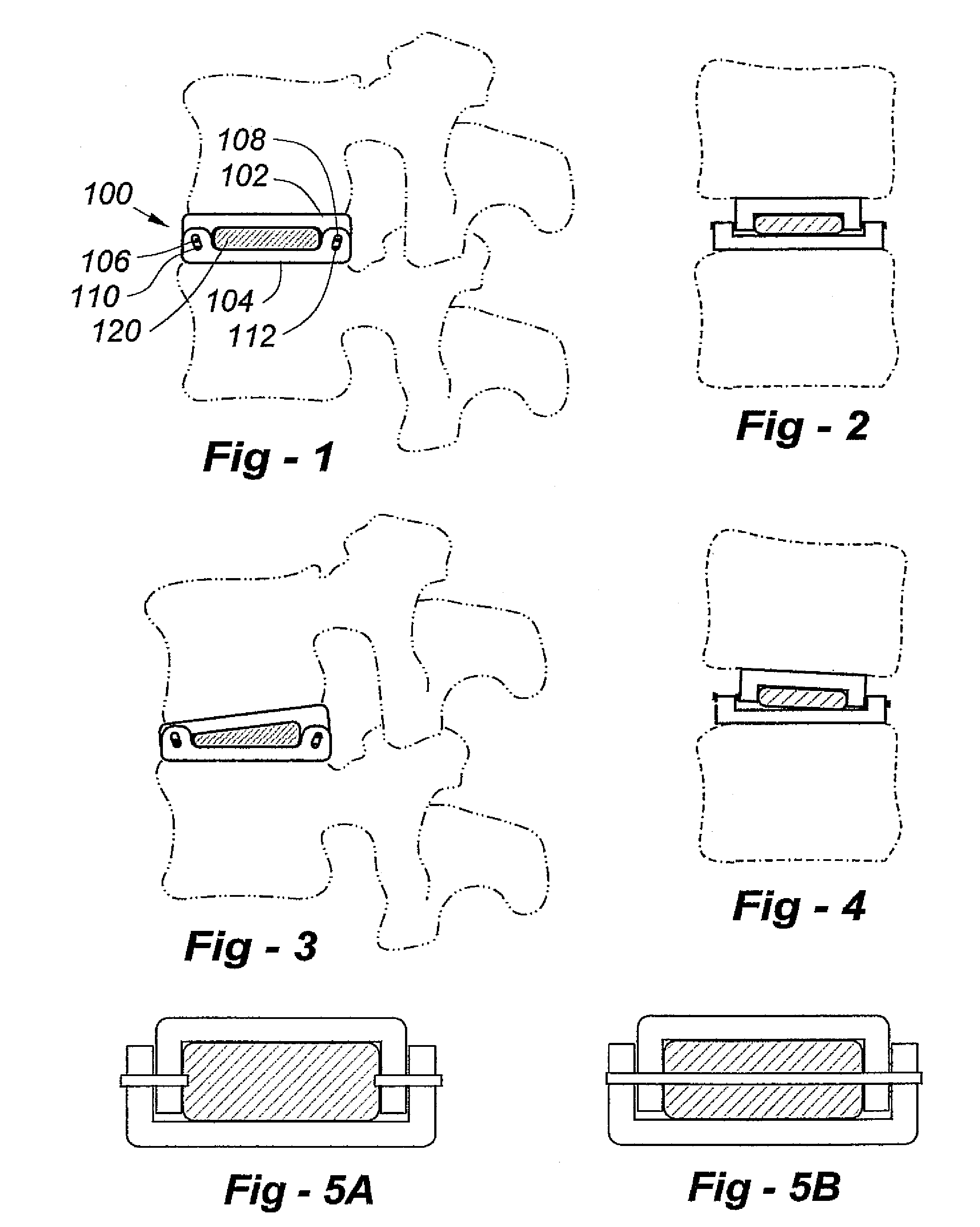Biaxial artificial disc replacement
a technology of artificial discs and adrs, applied in the field of artificial disc replacement, can solve the problems of increasing the risk of separation of the adr from the vertebrae above and below, increasing the changes of the future, and increasing the risk of disc separation
- Summary
- Abstract
- Description
- Claims
- Application Information
AI Technical Summary
Problems solved by technology
Method used
Image
Examples
Embodiment Construction
[0031]FIG. 1 is a view of the lateral aspect of the spine and an ADR according to the invention depicted generally at 100. A top endplate component 102 articulates with a bottom endplate component 104 through axles 106, 108 in the front and back of the ADR. A cushioning component 120 is disposed between the endplate components 102, 104. Holes 110, 112 of the bottom endplate component receive the axles 106, 108 and are sized to allow normal movements of the spine, preferably a limited amount of flexion, extension, lateral bending, and / or translocation. Depending upon the type and degree of desired movement, over-sized holes may be provided on the top endplate component, or both components 102, 104.
[0032]The endplate components are preferably made of metal, and the surface of each endplate component adjacent to the vertebrae would preferably incorporate a bone-ingrowth promoting surface of the types known to those skilled in orthopaedic design. The cushion component 120 would likely b...
PUM
| Property | Measurement | Unit |
|---|---|---|
| cross-sectional areas | aaaaa | aaaaa |
| degree of lateral bending | aaaaa | aaaaa |
| force | aaaaa | aaaaa |
Abstract
Description
Claims
Application Information
 Login to View More
Login to View More - R&D
- Intellectual Property
- Life Sciences
- Materials
- Tech Scout
- Unparalleled Data Quality
- Higher Quality Content
- 60% Fewer Hallucinations
Browse by: Latest US Patents, China's latest patents, Technical Efficacy Thesaurus, Application Domain, Technology Topic, Popular Technical Reports.
© 2025 PatSnap. All rights reserved.Legal|Privacy policy|Modern Slavery Act Transparency Statement|Sitemap|About US| Contact US: help@patsnap.com



